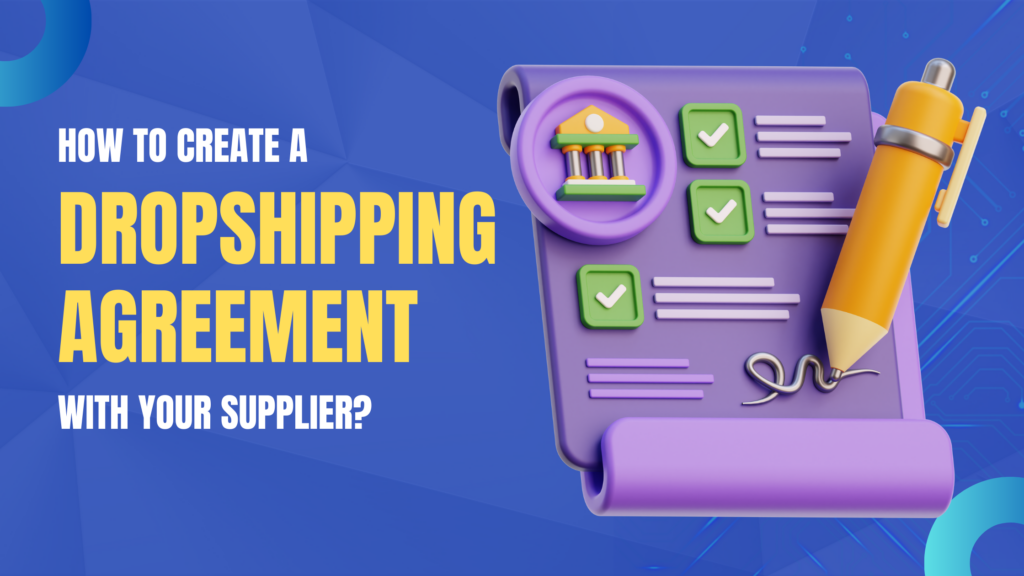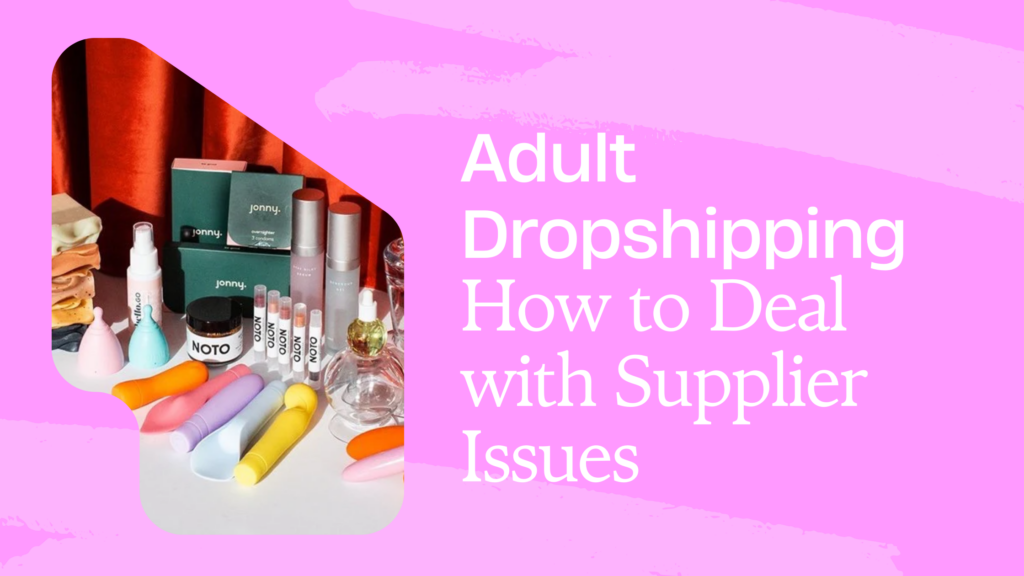How to Create a Dropshipping Agreement with Your Supplier?
Dropshipping has revolutionized the world of ecommerce, allowing aspiring business owners to enter the market without the hassle of managing inventory. With a dropshipping model, you can focus on building your online store and leave the logistics of shipping and fulfillment to your supplier. However, to ensure a successful and smooth partnership, it is crucial to have a well-drafted dropshipping agreement in place. In this blog, we will guide you through the process of negotiating and creating a comprehensive dropshipping contract with your supplier, protecting your business and setting the foundation for a mutually beneficial relationship.
Understanding Dropshipping
Source: Dropshipping.com
Before diving into the specifics of a dropshipping agreement, let’s first clarify what dropshipping entails. In a dropshipping model, there are three key parties involved: the seller (you), the manufacturer (your supplier), and the customer. Unlike traditional ecommerce stores, where the seller holds and ships the inventory, in dropshipping, the seller doesn’t physically handle the goods. Instead, when a customer places an order on your online store, the manufacturer directly ships the product to the customer.
The Importance of a Dropshipping Agreement
A dropshipping agreement is a legally binding contract between you and your supplier. It outlines the terms and conditions of your partnership, establishing the rights and responsibilities of each party. While it may be tempting to rely solely on verbal agreements or informal arrangements, having a written contract is essential to protect your business interests and ensure a clear understanding between you and your supplier.
Key Elements of a Dropshipping Agreement
When creating a dropshipping agreement, there are several crucial elements that you should include to safeguard your business. Let’s explore these aspects in detail:
Prices
Pricing is a critical aspect of any business, and dropshipping is no exception. As a seller, you need to ensure that the wholesale price of the goods from your supplier allows you to generate a profit. In your dropshipping agreement, clearly outline the pricing structure, including any discounts or volume-based pricing tiers. Additionally, specify how price changes will be communicated and implemented, ensuring transparency and avoiding any surprises that could impact your profitability.
Delivery Standards
As a dropshipper, you have limited control over the shipping and delivery process. It is crucial to establish clear delivery standards in your agreement to ensure customer satisfaction and minimize the risk of shipping-related issues. Outline the expected shipping times, handling procedures, and any specific packaging requirements. By setting these standards, you can maintain a high level of service and hold your supplier accountable for timely and reliable deliveries.
Quality Control and Defects Rectification
One of the challenges in dropshipping is the lack of direct control over product quality. Unlike traditional retail models, where you can personally inspect the goods, dropshipping requires trust in your supplier’s quality control processes. To protect your customers and your business, include clauses in your agreement that address how defects and quality issues will be handled. Ensure that the supplier has a comprehensive returns and exchange policy in place, or specify the process for rectifying any defective products.
Intellectual Property Rights
Intellectual property (IP) rights are crucial in ecommerce, especially when it comes to branding and product images. Clarify in your agreement that you have the right to use the supplier’s product images, trademarks, and other IP assets for marketing and selling purposes. Additionally, make sure that the agreement includes provisions that protect your own IP rights, such as your store’s branding and proprietary content.
Order Processing and Inventory Management
Efficient order processing and inventory management are essential for a smooth dropshipping operation. Specify in your agreement how orders will be processed, including order cutoff times and any order fulfillment requirements. Additionally, outline how inventory updates will be communicated, ensuring that you have accurate information to manage customer expectations and prevent overselling.
Termination and Dispute Resolution
While you hope for a long and successful partnership with your supplier, it is essential to include provisions for termination and dispute resolution in your agreement. Clearly outline the conditions under which either party can terminate the contract, including notice periods and any penalties or consequences. Additionally, specify the preferred method of dispute resolution, such as mediation or arbitration, to resolve any conflicts that may arise.
Confidentiality and Non-Disclosure
In the world of ecommerce, protecting sensitive business information is vital. Include a confidentiality and non-disclosure clause in your agreement to ensure that both parties maintain the confidentiality of proprietary information shared during the course of the partnership. This includes details about pricing, customer data, supplier lists, and any other trade secrets.
Governing Law and Jurisdiction
To avoid any confusion or conflicts regarding the interpretation of your dropshipping agreement, clearly state the governing law and jurisdiction. This ensures that any legal disputes will be resolved according to the agreed-upon laws and in the specified jurisdiction.
Negotiating and Drafting the Agreement
Negotiating and drafting a dropshipping agreement requires careful attention to detail and open communication with your supplier. Here are some steps to guide you through the process:
- Research and gather information – Familiarize yourself with the legal requirements and best practices for dropshipping agreements. Understand your business needs and priorities before entering into negotiations.
- Identify key terms and conditions – Based on the elements discussed above, identify the specific terms and conditions that are crucial for your business. Collaborate with your supplier to ensure that both parties’ interests are addressed.
- Seek legal advice – Consult with a lawyer experienced in commercial contracts to review and provide guidance on the agreement. They can help ensure that all necessary clauses are included and that the contract complies with relevant laws and regulations.
- Finalize the agreement – Collaborate with your supplier to finalize the agreement, ensuring that both parties are satisfied with the terms. Make sure to document any changes or amendments in writing.
- Sign and store the agreement – Once both parties have agreed to the terms, sign the agreement and store it in a secure location. Ensure that all relevant stakeholders have access to the document for future reference.
Conclusion
Creating a comprehensive dropshipping agreement with your supplier is crucial for protecting your business and establishing a strong foundation for a successful partnership. By including key elements such as pricing, delivery standards, quality control, intellectual property rights, and dispute resolution, you can ensure a smooth and mutually beneficial relationship. Remember to consult with legal professionals and communicate openly with your supplier throughout the negotiation and drafting process. With a well-drafted dropshipping agreement in place, you can confidently build your online store and provide excellent service to your customers.





